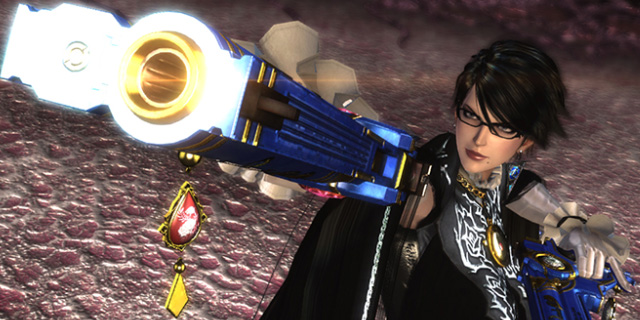
Bayonetta 2 is a direct follow-up to the 2009 original, in which the title character had to shoot her way through wave after wave of angels to prevent the destruction of the world at the hands of a resurrected Creator. Taking down a god was bound to have some repercussions, and that’s where Bayonetta finds herself when one of her summoned demons misbehaves, inadvertently killing fellow Umbra Witch Jeanne and sending her soul to Inferno.
The bulk of Bayonetta’s new quest is to save Jeanne’s soul by traveling to the Gates of Hell (the real ones, not Rodin’s returning bar/weapon shop of the same name) by accessing the forbidden mountain Fimbulventr. Along the way she encounters a peculiar young man named Loki who claims he knows the way and has his own reasons for wanting to climb the mountain. The trip won’t be easy, however, as the forces of both Paradiso and Inferno will stand in her way. Also haunting her steps is a mysterious man who appears to be a Lumen Sage, despite Bayonetta supposedly eliminating the last of them in the previous game…
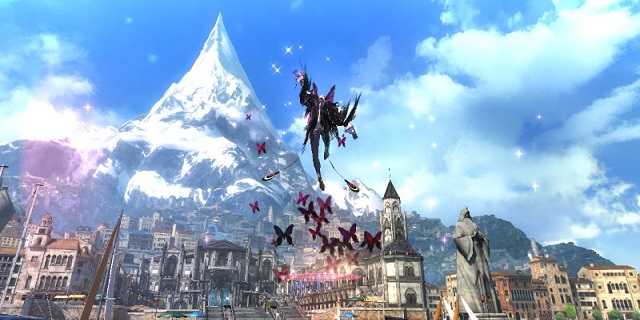
Not that anyone is really interested in the story here. Bayonetta is more about fantastic action in the finest Platinum Games tradition, and the sequel does not disappoint. As in the first game (and other Platinum titles, like The Wonderful 101), there are designated combat zones broken up by brief exploratory sections. At the conclusion of each combat, you are rated on your combo score, damage taken and the time it took you to clear the area, providing replay incentive to achieve the best rank you can. Unlike the previous game, Bayonetta 2 does not penalize you for using items in combat, which makes achieving a higher score much less painful.
Combat hasn’t changed much from the original title either. Bayonetta has weapons on both her arms and her legs, with one button “punching” and another “kicking” in simple and fluid combo potential. The most important button, however, is “dodge.” When timed correctly, a well-executed dodge sends Bayonetta into “Witch Time,” a slow-motion beatdown mode that allows her to inflict maximum punishment on her foes while extending her combo count.
Dodging also fills up your magic meter. With enough magic, you can either inflict a comically horrific “torture attack” on an enemy or engage an “Umbral Climax” that will supercharge all of your attacks until you run out of magic. Umbral Climax is a great way to inflict major damage on bosses, and once you deplete their health you can finish them off with an over-the-top demon summon climax.
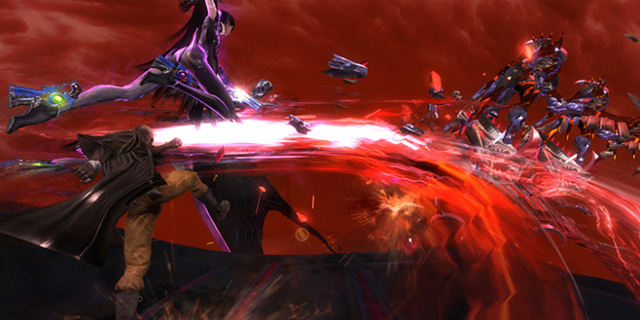
Beating enemies and getting good scores will provide you with halos (or the demonic equivalent, orbs). Gather enough halos and you can again go to Rodin’s bar to purchase upgrades and items, although you will have to really save up for just about everything but the most basic recovery items. Even if you score platinum rankings in every fight, you won’t have anywhere near enough cash to buy everything.
Really, the shop is just one more way in which Bayonetta 2 encourages you to replay it as often as possible. But not every player will have the obsessive nature and split-second reflexes required to squeeze every ounce of content out of the game. Thankfully the game offers three levels of difficulty at the start. Instead using of the traditional (and somewhat derivative) “easy”, “normal” and “hard” names, they are simply labeled “Climax 1, 2 or 3” with a description of the challenge. “Climax 1” is “good for those who want to experience the story,” for instance. It’s a nice change to accommodate the changing face of gaming.
Speaking of recent issues in gaming, the nature of the protagonist in this series can’t be ignored. Bayonetta is still one of the most dominant female action leads in the industry, standing alongside Samus Aran and Lara Croft with ease. While some might rightly argue against her over-sexualized nature, it’s important to note that there’s a huge difference between the way Bayonetta is presented versus, say, the girls in the Senran Kagura series. Bayonetta is not some innocent (underage) object. She is a 500-year-old being of immense power… who happens to strip down to almost nothing (although, it should be noted, not quite as little as in the first game) when she uses her summoning ability for “magic hair” reasons.
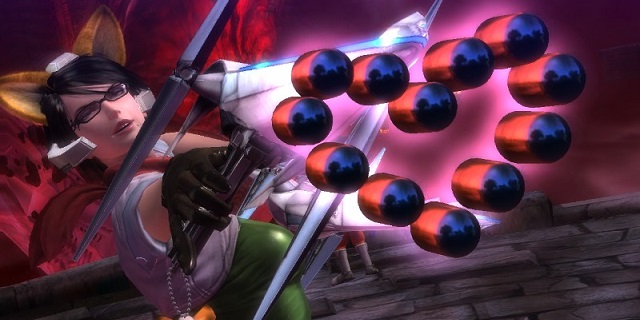
Bayonetta enjoys — indeed, embraces — her sexuality and has basically weaponized it. Despite supporting character Luka making a return appearance, there is no tacked-on romantic subplot to get in the way of the action here. Bayonetta is more than just they way she looks and the way she carries herself. This woman is here to kick angel (and now also demon) ass and just happens to look fabulous doing so.
Also looking fabulous is everything else about this game. The insane designs of the enemies, the magnificent summons, the detailed environments… this game looks amazing whether played on the big screen using the Pro Controller or in off-screen mode using the GamePad. The soundtrack and voice work is similarly great, making the overall presentation nearly perfect. The camera sometimes gets in the way during intense battles, but it’s a minor and rare problem.
What wasn’t a problem, however, was getting into the narrative despite not having played the original the first time around. That was an awkward obstacle when I played Assassin’s Creed III, for example, and has outright prevented me from picking up games in other series that made late-installment appearances on the Wii U. But Platinum has gone the extra mile for Nintendo fans who might have missed out on the first game and actually included the entire original adventure in the package for the sequel! This even applies to the digital version via an eShop credit. Two full, modern games for the price of one will always be an incredible deal, especially when both games are so excellent.
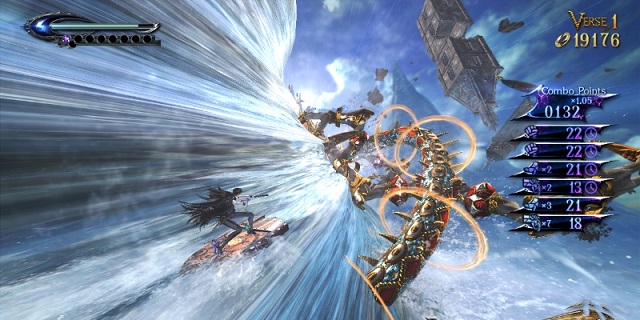
Both games took me about 18 hours each to finish. It should be noted that I received much better ratings in the second game than the first, despite not really having any chance to improve my skills. Part of that was not being penalized for items like I mentioned, but overall Bayonetta 2 felt more forgiving, especially when it came to recovering health between battles, resulting in far fewer continues. I would still recommend playing the original game first if you haven’t already, just be aware of that difference (or play on what that game still called “easy”). Getting the full Bayonetta experience in one package has made for an awesome week, and I believe it is one that every Wii U owner should share.
Pros: Simple yet engaging combat, rock-solid presentation, dominant female lead
Cons: Plot is kind of nonsense, some might find Bayonetta too sexualized



















